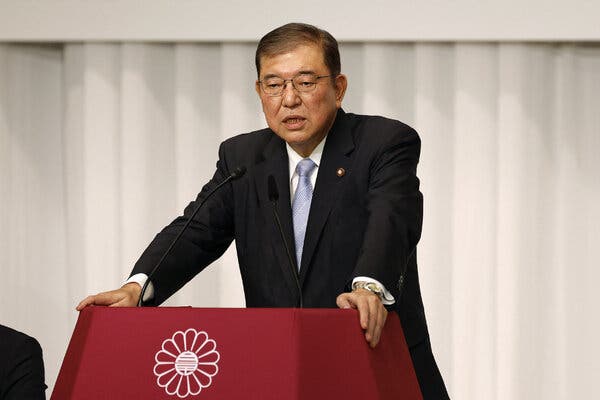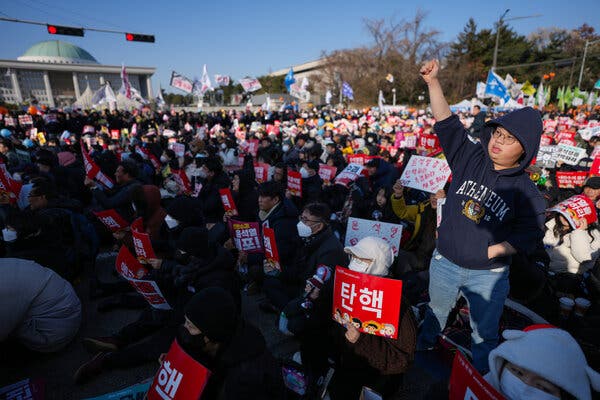Shigeru Ishiba, a former defense minister more popular with the rank and file than with his lawmaker colleagues, had sought his party leadership four times before.

The elite power brokers of Japan’s governing party appeared to take public sentiment into account on Friday when they elected Shigeru Ishiba, 67, to become the next prime minister of Japan.
Mr. Ishiba, a former defense minister who has long been popular with rank-and-file members of the Liberal Democratic Party but less favored by parliamentary lawmakers, had run for the leadership four times before finally attaining victory on Friday.
In a runoff between Mr. Ishiba and Sanae Takaichi, Mr. Ishiba, who is known for his plain-spoken opinions and extreme interest in military equipment, defeated Ms. Takaichi 215 to 194 in voting at the party’s headquarters in Tokyo. He will officially take over as prime minister next Tuesday, replacing Fumio Kishida, the outgoing prime minister.
Three years into his term, Mr. Kishida, who presided over an expansion of Japan’s defense budget and a rapprochement with South Korea, announced last month that he would resign after months of low approval ratings related to public dissatisfaction with inflation and his handling of a series of political finance scandals.
It was the most hotly contested race in years, with nine candidates vying for the leadership. The contenders included two women, as well as three former foreign ministers, and two rivals in their 40s, a novelty in a party ruled by aging men for so long. If Ms. Takaichi had won, she would have been the first woman prime minister in Japan.
The political factions that had dominated the party until recently had been officially dissolved in an effort to persuade voters that patronage would not dictate the party’s choices, making the race harder than usual to handicap.
The Liberal Democratic Party has governed Japan for all but four years since 1955. Despite public dissatisfaction over inflation, a slowing economy, labor shortages and the growing pressures of an aging population, voters have shown little inclination to vote the party out of power. In policy pronouncements, the candidates did not offer hugely different views of how they would govern.
Mr. Ishiba, a former defense and agricultural minister, comes from a rural constituency. He was first elected in 1986, when he was 29, at that time the youngest member of the House of Representatives.
During his campaign for the leadership this time around, Mr. Ishiba said he would push for rural revitalization as well as eventually phase out the country’s nuclear power plants, many of which have been mothballed since a 2011 earthquake and tsunami triggered a nuclear meltdown. He also said he would like to form an Asian version of NATO to ensure regional security and to renegotiate Japan’s alliance with the United States to make it more “equal.”
Going into the runoff, Ms. Takaichi led the voting, but political horse trading between supporters helped Mr. Ishiba pull ahead.
Kiuko Notoya and Hisako Ueno contributed reporting.
Motoko Rich is a reporter in Tokyo, leading coverage of Japan for The Times. More about Motoko Rich
See more on: Liberal Democratic Party (Japan)



